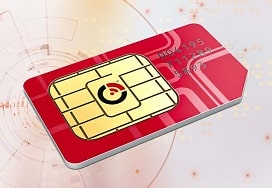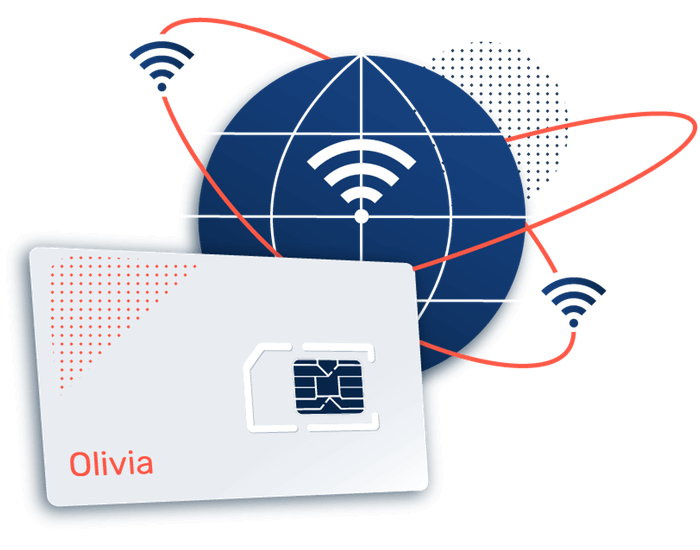Free Iot Sim Card IoT SIM card
The panorama of the Internet of Things (IoT) is marked by a large number of connectivity standards and protocols designed to facilitate communication between units, purposes, and providers - Does Nb-Iot Need A Sim Card. Each standard addresses particular needs and scenarios, making it essential to check these protocols primarily based on components like scalability, range, power consumption, and utility suitability.

IoT connectivity standards embody a extensive array of technologies, including Bluetooth, Zigbee, MQTT, CoAP, LoRaWAN, and cellular protocols such as LTE and 5G. Understanding the strengths and weaknesses of those standards can information businesses and developers in selecting the proper answer for their applications, ultimately impacting the effectivity and effectiveness of their IoT ecosystems.
Bluetooth is a extensively adopted standard known for its short-range connectivity. Bluetooth Low Energy (BLE) offers decrease power consumption, making it suitable for battery-operated devices. This protocol is especially effective for consumer IoT purposes, corresponding to fitness trackers and smart residence units. However, its limited vary is often a significant downside for purposes that require long-distance communication.
Sim Card For Iot IoT SIM Card Connectivity
Zigbee, another well-liked IoT protocol, is well-suited for mesh networking. This allows devices to speak over higher distances by relaying data between nodes. It operates on low energy and is usually utilized in smart lighting and residential automation systems. Zigbee's energy lies in its capability to support a lot of devices inside a network, making it perfect for smart constructing applications.
On the opposite hand, MQTT (Message Queuing Telemetry Transport) is a light-weight messaging protocol designed specifically for low-bandwidth and high-latency networks. It excels in eventualities where real-time communication is essential, similar to in distant sensor networks or machine-to-machine (M2M) communication. MQTT is designed for environment friendly message delivery, making it a best choice for IoT applications that require instant data transmission.
Iot Board With Sim Card IoT Shattering Connectivity Expectations

CoAP (Constrained Application Protocol) is another messaging protocol tailor-made for constrained gadgets on lossy networks. It is usually utilized in purposes with strict requirements concerning power utilization and knowledge overhead. CoAP operates over UDP, which enables low-latency communication, making it best for real-time data transfer in smart metropolis applications and industrial automation.
LoRaWAN (Long Range Wide Area Network) serves a unique objective, concentrating on low-power, long-range communication. Iot M2m Sim Card. It is particularly efficient for IoT applications that have to cowl large geographic areas, such as agricultural sensors or city-wide monitoring methods. LoRaWAN networks can assist thousands of devices, providing scalability that many different protocols may lack.
Cellular networks, particularly LTE and 5G, provide a robust connectivity choice for IoT devices requiring high bandwidth and low latency. 5G is designed for massive IoT implementations with low latency, enabling real-time communication for applications such as autonomous autos and smart healthcare. However, the cost of cellular connectivity may be prohibitive for smaller tasks, making it essential to evaluate the budget alongside technical necessities.
Iot M2m Sim Card IoT SIM cards

Security is another crucial consideration in the comparison of IoT connectivity standards. Each protocol has its own strategy to knowledge encryption and system authentication. MQTT, for example, can benefit from SSL/TLS encryption, while CoAP offers Datagram Transport Layer Security (DTLS). Ensuring robust security measures is important, particularly in scenarios involving delicate data, similar to health monitoring.
Interoperability is a big challenge within the IoT domain, as myriad units and platforms typically utilize totally different protocols. Ensuring compatibility between numerous systems can complicate implementation. Some standards, similar to Zigbee and MQTT, provide bridges or gateways that facilitate interoperability with different protocols, enabling extra seamless integration inside an IoT ecosystem.
Latency and bandwidth necessities differ greatly amongst completely different purposes. Low-bandwidth, high-latency applications like smart agriculture may discover success with LoRaWAN, while real-time applications corresponding to video surveillance might necessitate high-speed connectivity provided by 5G. The This Site choice of connectivity protocol ought to align with the precise requirements of the application in query to foster optimum performance.
Iot Sim Card What is an IoT SIM?
Environmental components additionally play a task in determining essentially the most appropriate connectivity standard. Urban environments could present challenges for protocols like LoRaWAN because of obstruction and interference, while BLE could wrestle with distance in large-area deployments. Understanding the physical environment during which the units will operate is important for guaranteeing dependable connectivity.
Deployment scenarios, whether or not they contain urban, rural, or industrial settings, tremendously influence the choice of connectivity standards. Industrial environments often necessitate protocols that may deal with high-bandwidth data streams, while smart house functions may prioritize low-power solutions. Different settings will dictate the parameters of the IoT deployment, necessitating a tailored strategy.
In conclusion, the comparison of IoT connectivity standards and protocols reveals a diverse array of options, each with its distinct advantages and trade-offs. Understanding the particular needs of an utility, together with distance, power consumption, and data transmission requirements, is important in choosing the most acceptable standard. The trends in the evolving landscape highlight the significance of seamless communication, sturdy safety, and interoperability to create cohesive and efficient IoT ecosystems. As expertise continues to advance, the need for adaptable and scalable solutions becomes much more pronounced, guiding future developments in IoT connectivity.
- Various IoT connectivity standards, similar to Zigbee, Z-Wave, and LoRaWAN, cater to different application wants, with Zigbee focusing on short-range low-power communication and LoRaWAN emphasizing long-range capabilities.
Iot Sim copyright IoT Industrial Business SIM Cards
- Bluetooth Low Energy (BLE) is perfect for purposes requiring fast device pairing and minimal power consumption, making it appropriate for wearables and short-range smart home units.
- Cellular IoT standards like NB-IoT and LTE-M are tailor-made for devices demanding wider coverage with network reliability, best for agricultural and transportation sectors.
- MQTT and CoAP are prominent application layer protocols for IoT, where MQTT excels in light-weight message transport whereas CoAP is designed for constrained environments with lower overhead.
- Security remains an important differentiator amongst protocols; for instance, Zigbee employs AES encryption, whereas standards like LoRaWAN use end-to-end encryption to guard data integrity.
Iot Device With Sim Card Unlimited IoT SIM Card 12 Month Prepaid Service
- Some connectivity standards prioritize scalability; as an example, Thread helps mesh networking, allowing a quantity of gadgets to communicate without a central hub, enhancing network resiliency.
- The power consumption profiles of protocols can range: LoRaWAN is extremely energy-efficient for low-frequency updates, while protocols like Wi-Fi require more substantial energy, making them less appropriate for battery-operated units.
- Different protocols may supply various degrees of interoperability; standards like AllSeen Alliance purpose to create a unified ecosystem, while others may require particular gateways or bridges for cross-standard communication.
Iot Sim Card Uk What is an IoT SIM?
- The choice of protocol usually depends on environmental concerns, with standards like Zigbee performing well in indoor settings as a outcome of its robust anti-interference capabilities compared to others like LoRaWAN, which is better fitted to rural functions.
What are the main IoT connectivity standards?
The main IoT connectivity standards embody MQTT, CoAP, HTTP, LoRaWAN, Zigbee, and NB-IoT. Each standard serves specific use circumstances, with various degrees of efficiency, energy consumption, and range, catering to numerous IoT functions.
Iot Sim Card South Africa IoT SIM Card eSIM Global Connectivity
How do I choose the proper protocol for my IoT application?
Selecting the appropriate IoT protocol depends on components like data volume, energy consumption, latency requirements, and network topology. Analyzing these elements alongside the particular operational environment will guide you in path of the most suitable choice.
What are the variations between LPWAN and conventional wi-fi protocols?
Does Nb-Iot Need A Sim Card Buy IoT SIM Cards
LPWAN (Low Power Wide Area Network) protocols, like LoRaWAN and NB-IoT, focus on long-range communication with low power consumption, making them best for battery-operated devices. In distinction, conventional wi-fi protocols like Wi-Fi and cellular supply higher bandwidth and quicker connectivity, however they consume extra energy and have shorter ranges.
Is safety a big concern in IoT connectivity standards?
Yes, security is paramount in IoT connectivity. Protocols like MQTT and CoAP incorporate security informative post measures like authentication and encryption. It's important to understand these options when deciding on a protocol to make sure knowledge safety and system integrity.
Iot Sim Card Narrowband IoT SIM cards
Can a quantity of protocols be used in a single IoT deployment?
Absolutely. Many IoT deployments utilize a mixture of protocols to optimize efficiency and coverage. For example, you may use LPWAN for long-range sensor data and Wi-Fi for native, high-bandwidth communication.

What are some great benefits of utilizing MQTT over CoAP?
Iot Sim Card IoT Data SIM Card Plans Features
MQTT is designed for high-throughput messaging and low bandwidth, making it appropriate for environments with frequent updates. CoAP, then again, is optimized for constrained devices and networks, making them a better match for certain purposes. Choosing between them depends on particular application necessities.
How does network structure influence IoT protocol choice?
Network structure affects protocol alternative by dictating factors like vary, scalability, and connectivity. A centralized structure may benefit from protocols like HTTP, whereas a decentralized structure might lean in course of MQTT or CoAP for efficient message routing.
Are there future tendencies in IoT connectivity standards?
Iot Sim Card South Africa IoT Data SIM Card 12 Months
Yes, future trends embody elevated adoption of 5G technology, enhanced safety measures, and interoperability between existing and new protocols. Emerging standards like Matter purpose to unify IoT gadgets, making integration and communication more seamless throughout platforms.